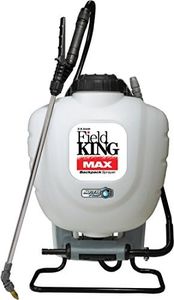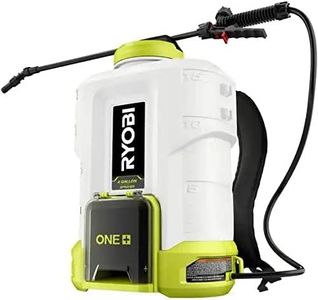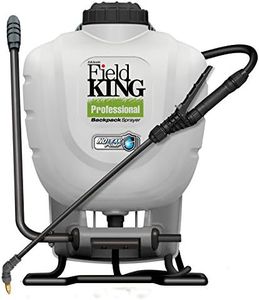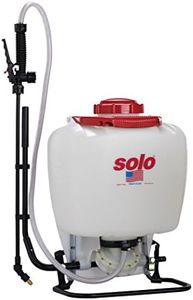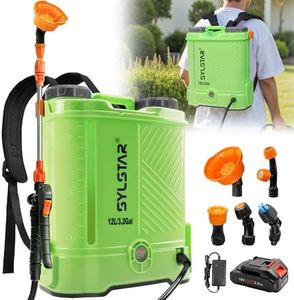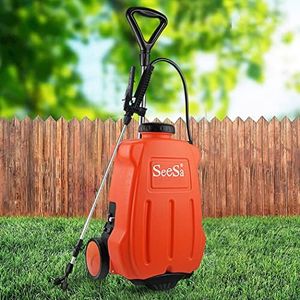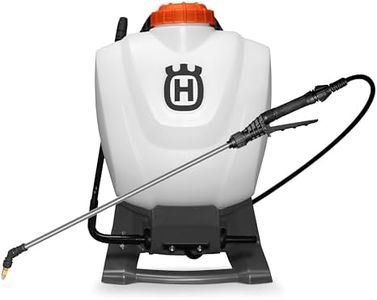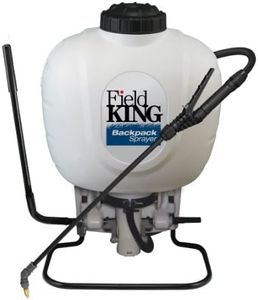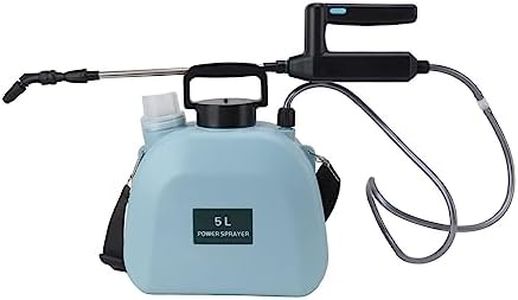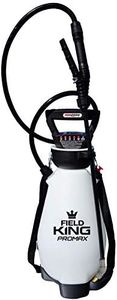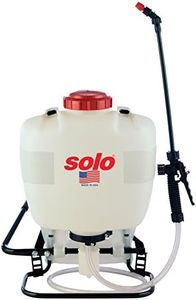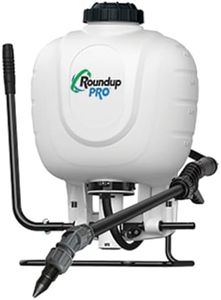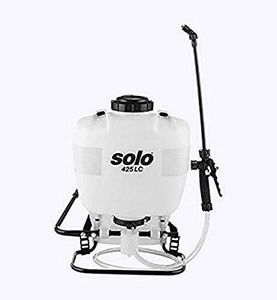We Use CookiesWe use cookies to enhance the security, performance,
functionality and for analytical and promotional activities. By continuing to browse this site you
are agreeing to our privacy policy
10 Best Backpack Pump Sprayer
From leading brands and best sellers available on the web.Buying Guide for the Best Backpack Pump Sprayer
Choosing the right backpack pump sprayer can make a huge difference in how easily and efficiently you tackle jobs like gardening, landscaping, pest control, or even cleaning large outdoor surfaces. The main goal is to find a sprayer that feels comfortable during use, matches the size of the job you want to accomplish, and handles the types of liquids you plan to spray (like water, fertilizers, or pesticides). By understanding the key features, you'll be able to select a sprayer that meets your needs and helps you work more comfortably and effectively.Tank CapacityTank capacity refers to how much liquid the sprayer can hold at once, and it's usually measured in gallons or liters. It's important because larger tanks let you cover more area between refills, but they also weigh more and can be heavier to carry. Small tanks (around 2-3 gallons) are lighter and easier to carry for shorter or smaller jobs, while medium (4 gallons) and large tanks (5 gallons or more) are better for bigger spaces but are heavier on your back. Choose the size by thinking about how much area you typically need to spray and how long you can comfortably carry a filled tank.
Pump Type (Piston vs. Diaphragm)Pump type describes how the sprayer builds pressure to push the fluid out. Piston pumps are common and work well for water-based and some light chemicals, offering higher pressure for a finer spray, but they're not great for abrasive or very thick liquids. Diaphragm pumps can handle a wider variety of chemicals, including some harsher solutions and thicker liquids, and are more durable for professional or heavy-duty use, but often don't reach quite as high pressure. If you plan on using your sprayer mainly for water or mild solutions, a piston pump is fine; for more demanding or corrosive chemicals, or for frequent use, consider a diaphragm pump.
Pressure RangePressure range shows how forcefully the sprayer pushes out the liquid and is measured in PSI (pounds per square inch). Higher pressure means a longer spray distance and a finer, more even mist, while lower pressure is gentler and uses less effort. Typical home use sprayers work well between 40-70 PSI, which covers most garden and yard needs. For more specialized jobs or reach (like spraying tall trees or larger fields), look for higher pressure options. Think about what you'll be spraying most: delicate plants need less pressure, whereas hard-to-reach areas benefit from a higher PSI.
Weight and Comfort FeaturesWeight refers to how much the sprayer weighs both empty and full, and comfort features include padded straps, ergonomic handles, and shaped back panels. These are important because you'll be wearing the sprayer for a while, especially with bigger jobs, and extra weight or poor straps can cause fatigue or discomfort. Lightweight designs and well-padded, adjustable straps help you work longer with less strain. Try to match the weight and comfort features to how long you expect to use the sprayer and how strong or fit you feel carrying it around your yard or garden.
Nozzle OptionsNozzle options are about the different spray patterns and controls you have, such as adjustable tips for spraying in a fine mist, a straight stream, or a fan pattern. This matters because different tasks might need different types of coverage—a fine mist for delicate plants or a strong stream to reach further or clean surfaces. Sprayers that include several nozzles or a fully adjustable nozzle are the most versatile for various jobs. Consider what types of spraying you'll do most often and if you'll need to switch between patterns for different applications.
Chemical CompatibilityChemical compatibility is about what materials the sprayer tank, seals, and internal components are made from, and whether they can handle different types of chemicals (fertilizers, acids, pesticides, disinfectants). Some sprayers are only safe for water and mild mixtures, while others are built to resist harsh or corrosive substances. Using the wrong sprayer for a chemical can damage the equipment and even produce hazardous leaks. Always check that the sprayer is rated safe for all the types of liquids you plan to use.
Ease of Cleaning and MaintenanceEase of cleaning means how simple it is to rinse out the tank, clean the pump, and unclog or replace filters and nozzles. This is important because built-up residues can clog or damage the sprayer or even mix harmful chemicals by accident. Sprayers with wide openings, removable parts, and easy-access filters are the easiest to clean and maintain. Pick a sprayer that you feel comfortable cleaning regularly according to what you'll be spraying most often.
